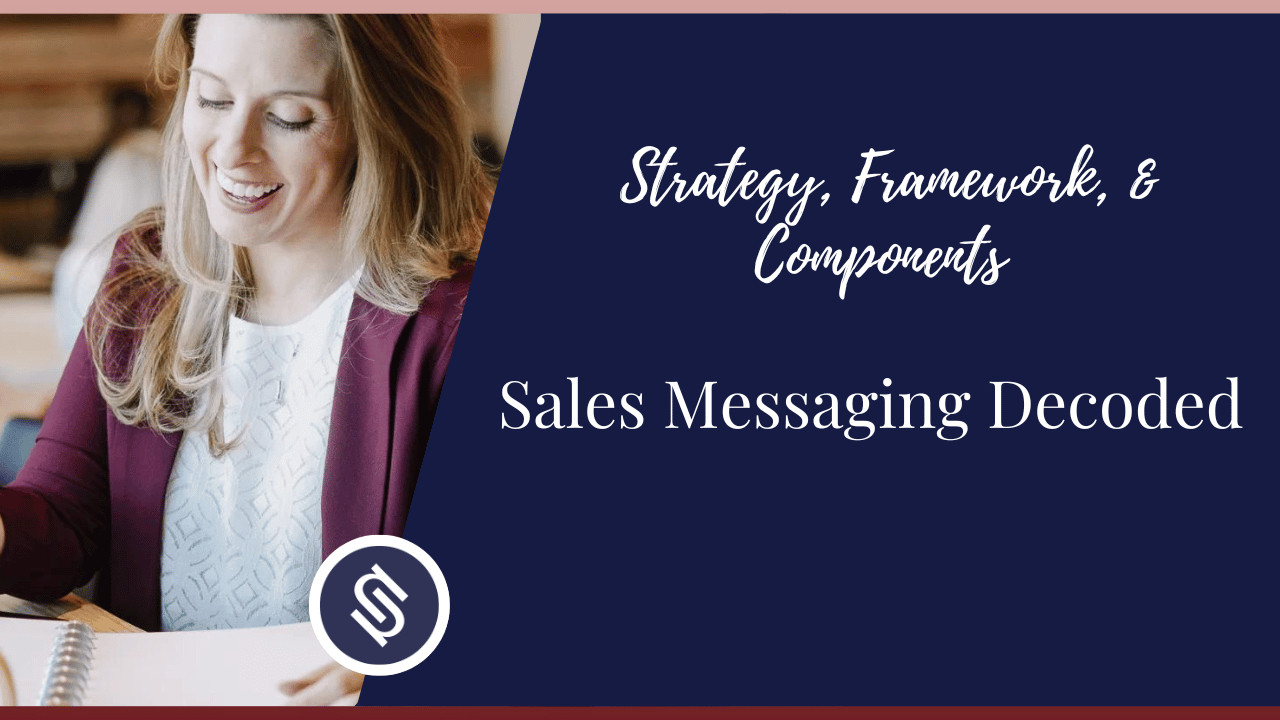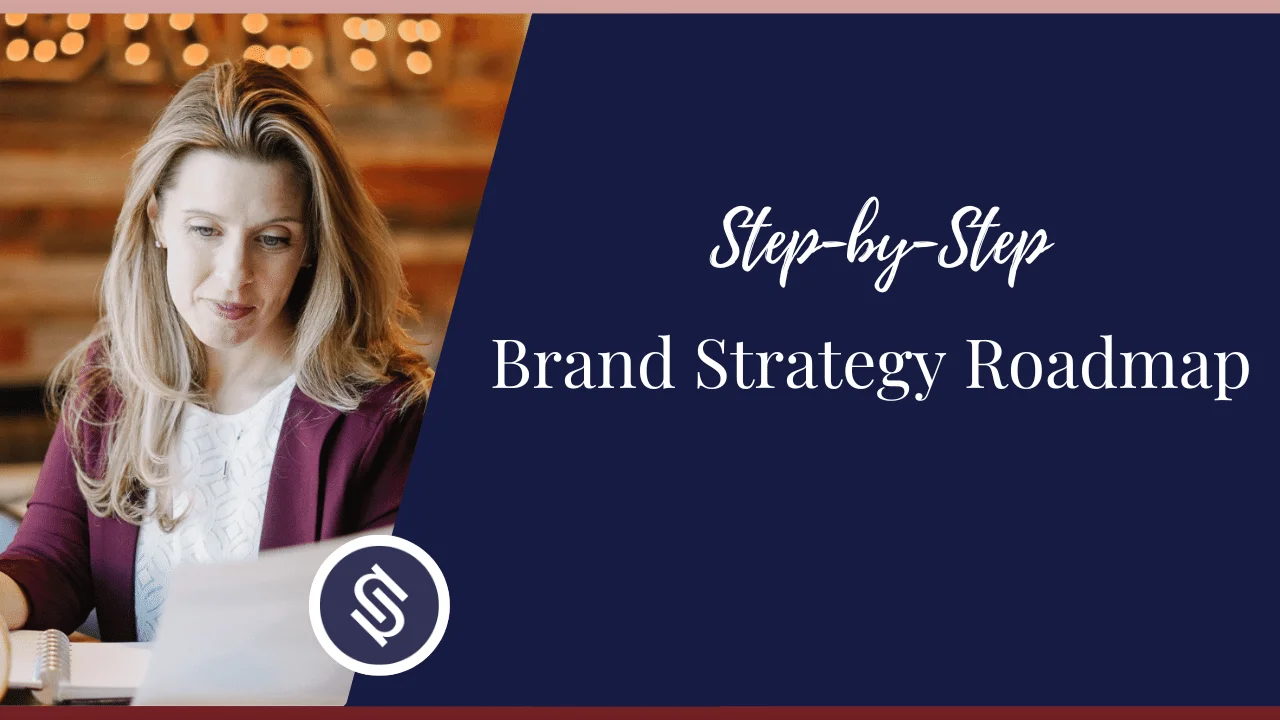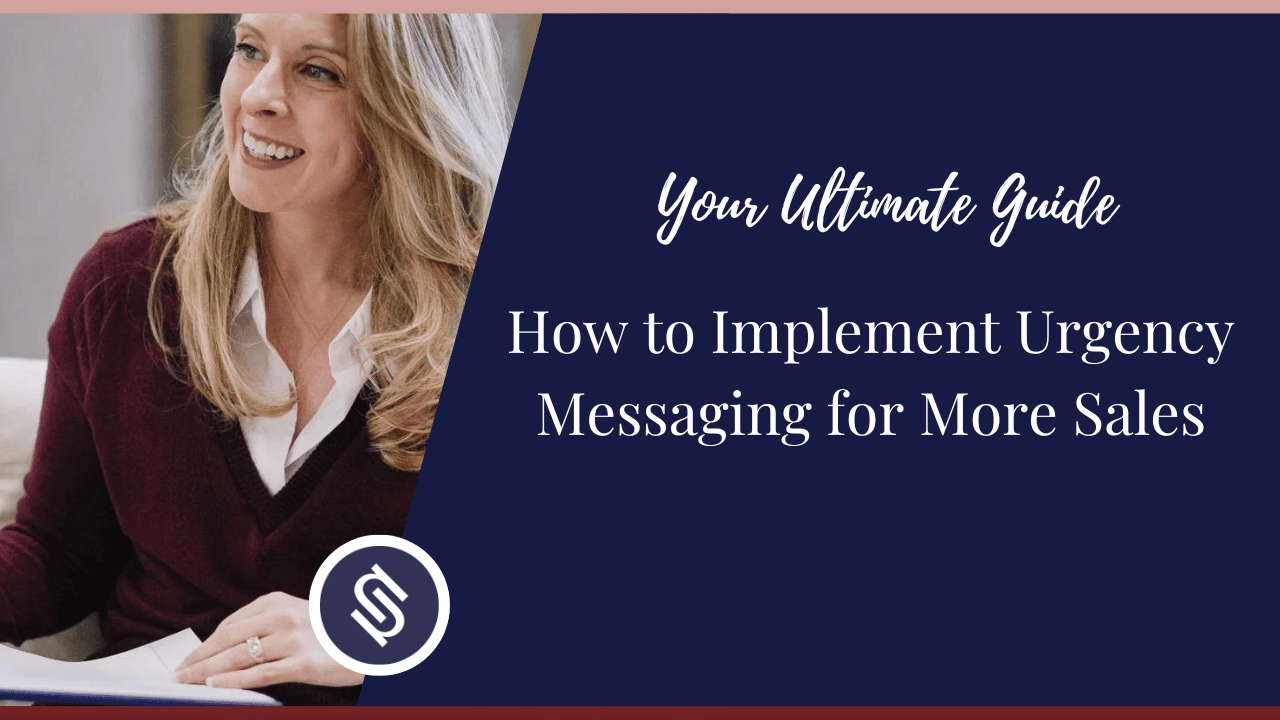B2B brand messaging is the delicate art of knowing exactly what to say to inspire the kind of action you want to happen.
Needless to say, it’s easier said than done, especially when you’re edging your way through a thick crowd of competitors on a limited budget.
Besides, your target market is likely already bombarded with too many messages, so simply being heard seems like an impossible task.
Or is it?
I’m here to tell you it’s not.
In this in-depth guide to B2B communication, you will learn how to create impactful messages that command your audience’s attention to generate real results.

What is B2B Messaging?
B2B (or “business-to-business”) messaging is a marketing strategy that aims to capture the attention of businesses and organizations instead of individual consumers.
A B2B message aims to educate an individual purchasing on behalf of a company. It’s a way to communicate how you can be the solution to a problem they’re trying to solve or a need they want met.
Need help marketing your flagship program to B2B companies? Book a discovery call with me today to explore your options.
B2B Messaging vs. B2C Messaging
While B2B messaging targets other businesses, B2C focuses on individual consumers.
For instance, Netflix may employ a B2C marketing strategy because it targets individual customers who like to watch movies on the go.
On the other hand, a company like Amazon needs B2B messaging to communicate with online sellers and companies.
B2B messaging is also driven by logic and results, whereas B2C marketing leans more toward appealing to emotion or entertaining an audience.
As B2B companies also weigh the long-term impact of their purchase decisions and consult with others before closing a deal, it takes longer to convert businesses into customers than individuals.
What is the Importance of Messaging?
Your brand message tells your audience who you are, what you offer, and why they need you. It communicates your relevance to them and what sets you apart from your competition.
Cliche as it sounds, differentiation is key to getting noticed in today’s hyper-saturated marketplace. Clear, coherent, and impactful messaging gets that done for you.

What Are the Key Elements of Successful B2B Messaging?
How you craft your B2B messaging strategy will depend on your industry, the audience you target, and the channels you use. Though these factors vary, the following key elements are a must:
Clear Buyer Persona
A buyer persona represents a segment of your audience and will help ensure your message is relevant.
Based on the diversity of your target audience, their demographics, and where they are in the customer journey (the Awareness, Consideration, and Decision stages), you need to create buyer personas that clearly reflect each audience segment.
Doing so will enable you to know precisely how to craft messaging that resonates with your audience every time.
Audience Segmentation
A one-size-fits-all message just doesn’t work. A better strategy is knowing exactly who you’re targeting and shaping your message according to what you know about your audience.
You’ll need to divide your target audience into separate segments to accomplish this. These allow you to craft a specific message that resonates with every buyer group, whatever stage they are in the customer journey.
Unique Value Proposition
You’ll want your message to be attention-grabbing. For that, it needs to be original. You need to be unique. Tell your audience what sets you apart using value-based messaging–in other words, ask yourself, “Why should my audience choose me over a vast sea of options?”
Right Timing
A great story goes hand-in-hand with the right context. Amplify your message by knowing when to tell your story.
Knowing the right timing entails understanding the customer journey and taking advantage of recent events, cultural changes, and other happenings that affect your audience or interest them.
Data to Back up Your Claims
Anyone can claim pretty much anything online. What gets people’s attention is data, a proven track record, and proof of financial incentive. Use those to bolster your message and make it more attractive to your audience.

Examples of B2B Messaging Strategies
Explore the following types of B2B messaging strategies that you can use in your marketing plan:
1. Email Marketing
Unlike individual consumers, businesses are more inclined to find solutions and achieve their business goals, like boosting ROI.
An engaging and informative newsletter is a great way to bring your brand in front of your audience and tell them how you can address their pain points.
2. Content Marketing
Maximize your brand reach with articles, blogs, and case studies.
With SEO, educational and data-driven content can help broaden your reach and ensure that your content is delivered to audience segments that are more inclined to engage meaningfully with you.
3. Digital Marketing
Digital strategies, which include paid ads and SEO, allow you to cover all your bases–from a digital storefront (aka your website) to a combination of paid and organic marketing techniques.
Digital marketing strategies will help you cast as wide a net as possible while simultaneously deepening your reach into each target segment.
4. Social Media
Social media is great for building connections and establishing relationships. It’s also an excellent tool for social listening and learning to speak your target audience’s language.

How to Craft a Powerful B2B Messaging Strategy
Developing a messaging strategy might sound like a piece of cake. We wish! In reality, it takes space to be creative, a deep understanding of your audience, and the skill of a wordsmith.
The thing is, we’re often having to squeeze our creative juices amid tight deadlines and limited budgets. So, where do we start?
Here’s a guide to get you going:
1. Define Your Target Audience
When you understand your target audience, you’ve likely already figured out your message, how you need that message communicated, and what channels to use.
In other words, it’s already half the battle.
To define your target audience:
- Conduct market research
- Analyze your existing customer base
- Research your competition
- Develop an ideal buyer persona(s)
2. Know Your Brand Position
Your brand position tells you how your target market perceives your brand.
You can help establish this by creating a brand positioning statement, which will help you define how you want to control the narrative around your brand.
This is also where a messaging hierarchy comes into play. Your brand position becomes more relatable and convincing when you adapt a marketing funnel (or a standard model of your customer’s journey) to fit your brand.
3. Establish Your Marketing Mix
Now, establish your marketing mix (also called the Four P’s of marketing):
- Product: What you offer
- Price: How much your product costs
- Placement: Where your products or services are available
- Promotion: How your customers find your products or services
Pinpointing these areas before jumping to a marketing plan will help you better identify the channels that suit your message and how to communicate your brand identity effectively.

4. Analyze Your Competition
Now, take a close look at your competition. They will tell you much about what you can do better or differently.
Essential things to look at are:
- Strengths: What strategies, platforms, and messages work for them? How well do their audiences respond?
- Weaknesses: These include audience segments they haven’t tapped or haven’t had success with and platforms they haven’t maximized.
- Opportunities: What does your audience want or need that your competition doesn’t offer?
- Threats: What are ways your competition may threaten your position in the market, and what can you do to secure your position?
5. Create a Marketing Plan
It’s time to create a marketing plan – the how of your brand messaging.
Your marketing plan is a detailed roadmap of executing your messaging strategy, from the platforms to use (like LinkedIn and Facebook) down to how much you’re willing to spend on the campaign.
Your plan should include the following basics:
- Budget
- Objectives
- Channels
- Strategies
- Performance indicators and metrics
6. Test and Revise
The right messaging usually takes several iterations. Don’t get discouraged if it doesn’t quite hit the mark the first time.
As you execute your marketing plan, test different versions of your message or see how they perform on various platforms.
Use the insights you gather to improve your delivery or reshape your message to resonate better with your target audience.
Struggling with a lackluster messaging strategy? Get expert eyes on your marketing campaign with me through ConversionRx. Together, we will go through a comprehensive conversion review and diagnosis to refine your offer and drive more business your way.

How to Develop a B2B Messaging Framework
Your messaging framework guides how to implement your messaging across various platforms and audience segments.
Here’s how you can craft one that works for you:
Understand the Customer Journey
First things first: understand where your buyer is. As I mentioned earlier, there are three stages in the customer journey:
- Awareness: Your customer becomes aware of a problem and realizes they need a solution.
- Consideration: At this stage, they have understood what they need and started researching their options.
- Decision: The customer is ready to make a purchase decision.
How you interact with your audience should depend on what stage they’re in.
For instance, someone in the consideration stage is weighing their options. That’s where you can invest time and effort in educating your audience on the benefits of choosing you.
Talk about how you address their pain points, your advantages over the competition, and what incentive they stand to gain.
Tell an Engaging Brand Story
A story humanizes a brand, which helps you connect with your audience. Sure, you’re ultimately selling to a business, but remember you’re still dealing with people behind these businesses.
While an emotional connection is beneficial mainly in B2C messaging, some degree of it is still necessary in B2B communication.
Your brand story should tell people how you started, what your mission and vision are, and what values you uphold. Ask yourself what makes you relatable to your target audience. Why should they pay attention to you?
Let’s take Apple, for instance. Their brand story revolves around being different. They started telling it with the “Think Different” campaign in 1997.
The message was clear: Apple wanted to change the course of technology by being “the crazy ones” who did what others had never dreamed of.
Needless to say, it was a revolutionary approach to technology and design, and the message clicked. We know that because that’s still the way we think of Apple to this day. People buy their products for the same innovative appeal that they presented many years back.

Show Proof
Most businesses make decisions based on financial incentives and ROI. They want less risk and more benefits. The way to address that is by proving that you can deliver. How? By backing up your claims with numbers and data.
Case studies, testimonials, and success stories are more persuasive than the most creative marketing copy. They’re proof of the kind of results you’re capable of delivering. So don’t be afraid to flaunt them!
Be Authentic
It may sound counterintuitive, but casting a wide net instead of focusing on a specific market segment may actually result in lost opportunities.
Let’s face it; you can’t appeal to everyone. But given your values, unique value proposition, and story, there is a market segment that’s most likely to listen to you. As you dig deeper into what makes you you, you’ll find your people and know how best to speak to them.
Be Consistent
A clear, coherent, and consistent core message throughout all your platforms is a sure way to make your message stick. This also goes with your tone, language, and personality.
It’s easier to be consistent when your messaging is:
- Simple: It’s easy to remember and adapt across different platforms.
- Direct: Avoid fluff, jargon, and complex concepts. You want people to remember what you said even if they only spent a few seconds reading it.

How to Measure the Success of Your Messaging
By now, we already know that revisions are part of developing a powerful brand message. But how do you know when you’ve created the one?
Here’s how to know when your messaging clicks or when you need to try again:
Identify Your Goals
Before even starting a campaign, you need to know what you want to achieve with your message. These goals will not only direct your execution but also help you determine what metrics and tools are appropriate.
Establish Metrics Early
Your key performance indicators (KPIs) and goals go hand-in-hand. Identify your metrics as you pinpoint the goals you want to achieve with your message.
Some of the main areas to look at are reach, conversion, and engagement.
Pinpointing metrics early on will also help you stay on course, even as changes need to be implemented throughout the campaign.
Analyze Your Results
Compare your data across various channels to analyze how well your message is received and its impact on your objectives.
You’ll also want to compare your data with industry standards, the performance of your previous campaigns, or your competitors.

Tips to Create Strong B2B Messaging
Developing a compelling brand message can be challenging, especially with too many competing voices online.
These tips will help you shape one that gets your target audience to pay attention:
Keep It Personal
It’s tempting to focus on attracting as many people as possible. There’s nothing wrong with broadening your reach. But remember not to sound impersonal in the process.
To do so, target specific audience segments, know where they are in their customer journey, adjust your message appropriately, and provide solutions to their pain points.
These help create a feeling that you’re listening and know precisely what they need instead of bombarding them with a generic message in the hopes that someone might notice.
Don’t Be Afraid of Change
Your message, like you, will evolve. You might not get it right first, or your context may call for it. Whatever the case, welcome change.
Accept that revision is part of the creative process. It’s okay if your first few iterations turn out to be flops. What’s important is that you’re listening to your audience and are constantly improving.
Include a Clear CTA
Be clear about how you want your audience to act upon your message, and make it easy for them to do it. Direct them to a clear call to action (CTA), but avoid confusing them with too many choices.
Stay Consistent
Your message should always be aligned with your brand identity and personality, regardless of the channels you use. Your core message should also be the same throughout, or else your target audience may be confused.

Common Mistakes to Avoid in B2B Messaging
When creating a brand message, make sure to avoid these common mistakes:
Neglecting to Appeal to the Emotion
Brands often forget that it’s still people behind the businesses they market to. We usually hear about the appeal to emotion in B2C messaging, but it’s also vital in B2B communication.
Remember that it’s people who make decisions for their companies, and they will be impacted by how they feel about your brand, too.
Delivering a Generic Message
A mistake that stems from a lack of understanding of the target audience, this is practically a death knell to any marketing campaign. You have to understand who you’re speaking to if you want to be relevant and engaging.
Not Mentioning the Benefits
Businesses are incentive-focused. They want to know what you can do for them and how well you can do it. So, highlight the benefits of choosing your brand and make them even more appealing with data, success stories, and testimonials.
Ignoring Feedback
Whether it’s data gathered from surveys, performance analyses, or social listening, feedback is crucial to improving your message and its delivery. If you know something doesn’t work, don’t waste your time and resources by sticking to it.

Frequently Asked Questions (FAQs)
I’ve answered some of the most commonly asked questions about B2B brand messaging below:
How Often Should B2B Messaging be Updated or Revised?
There is no specific time to update or revise your brand message.
But you’ll know it’s time to change things up when your performance metrics tell you your message is falling on deaf ears, you’re not seeing enough conversions, or when a major industry shift is taking place.
What Role Does Content Play in B2B Messaging?
Great content is key to successful B2B messaging, as it maintains and nurtures relationships with your audience, drives traffic (especially when partnered with SEO), and generates leads.
Conclusion
Your brand message is what sets you apart in a highly saturated and intensely competitive marketplace–don’t make the mistake of underestimating it!
I hope this comprehensive guide has helped enlighten you on how to craft your most compelling message yet.
If you need dedicated guidance, you can start a FiniSprint with me today to join a one-on-one coaching program. You get on-demand support that is tailored to your goals!







